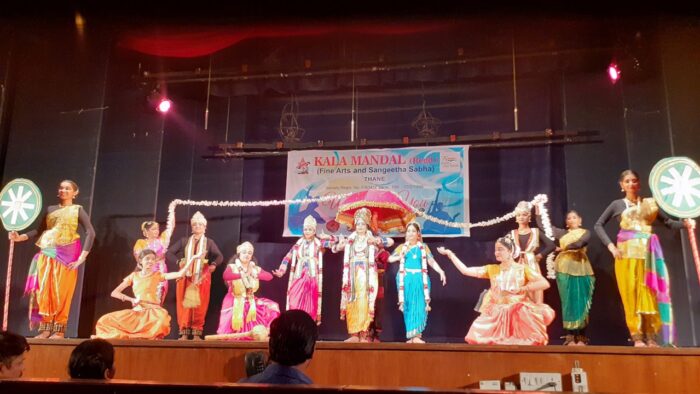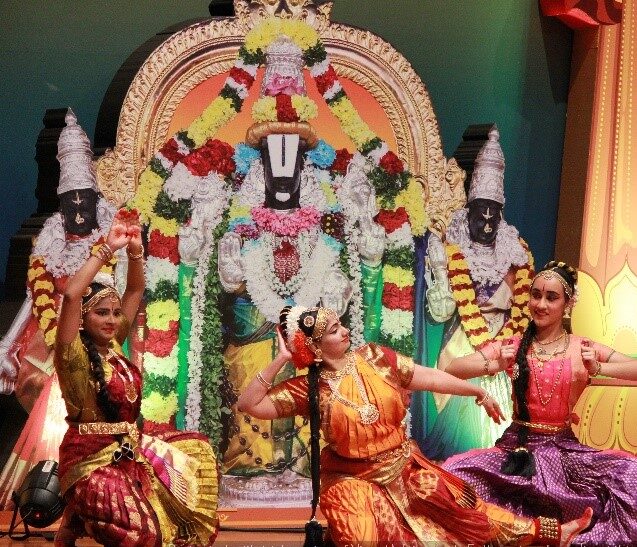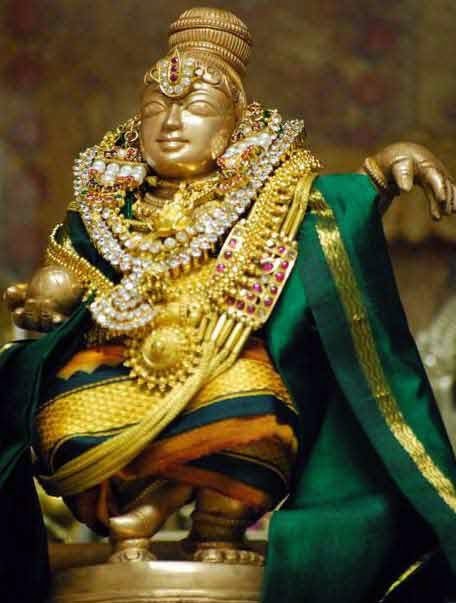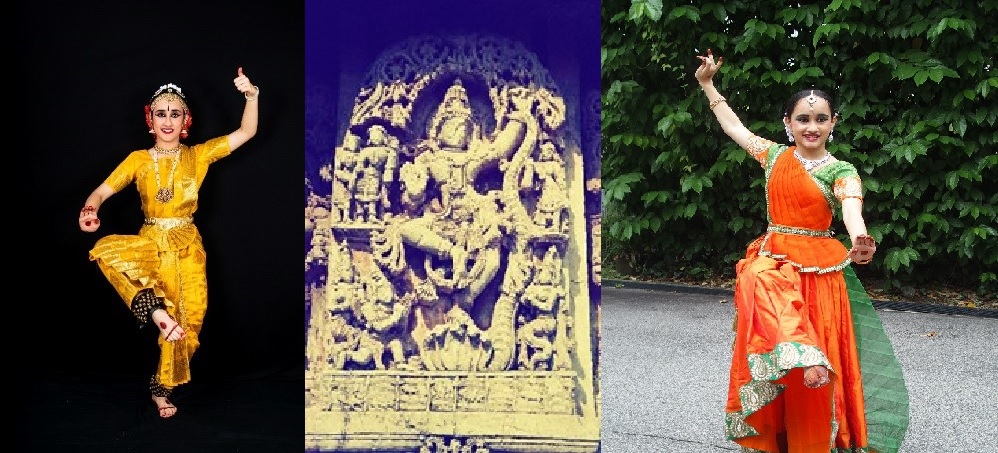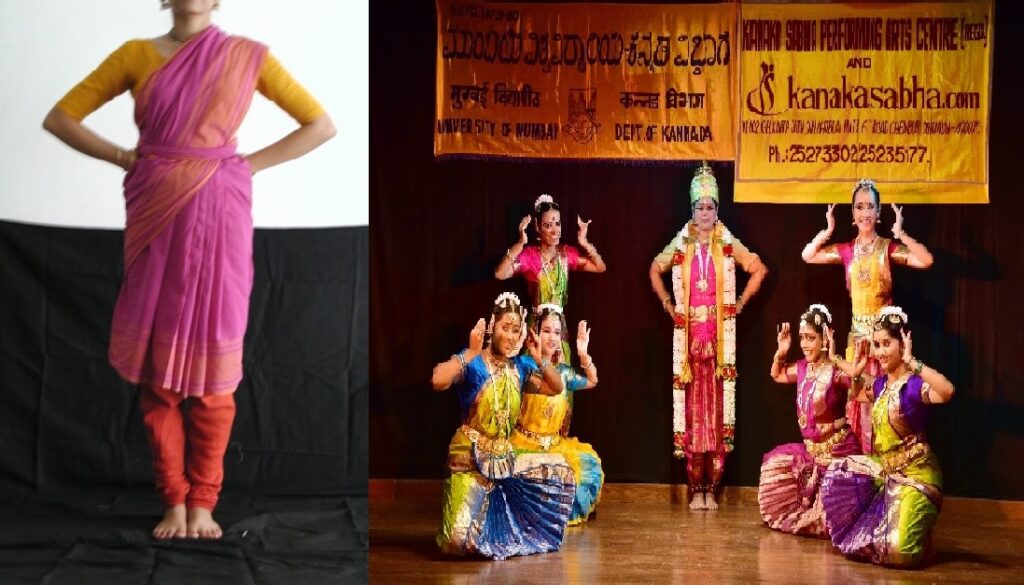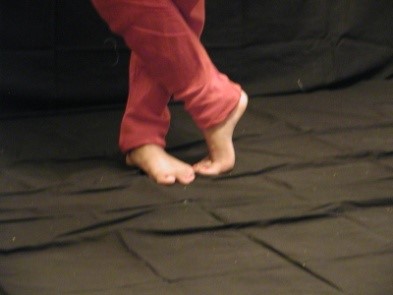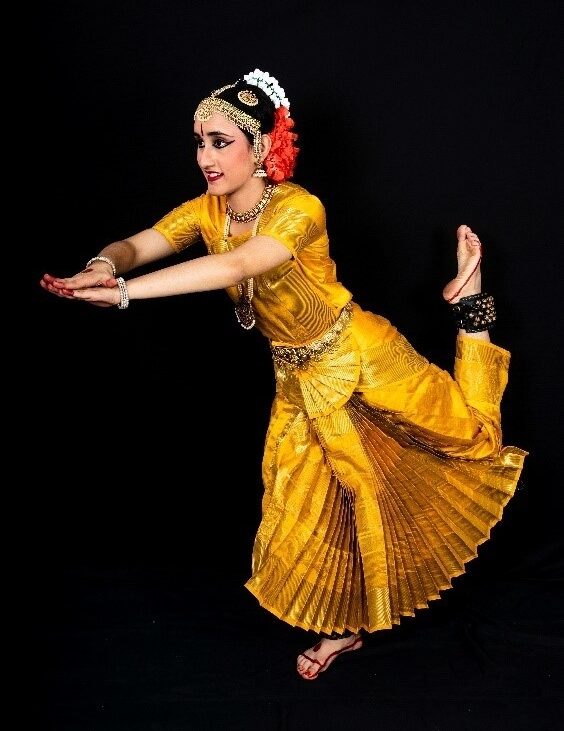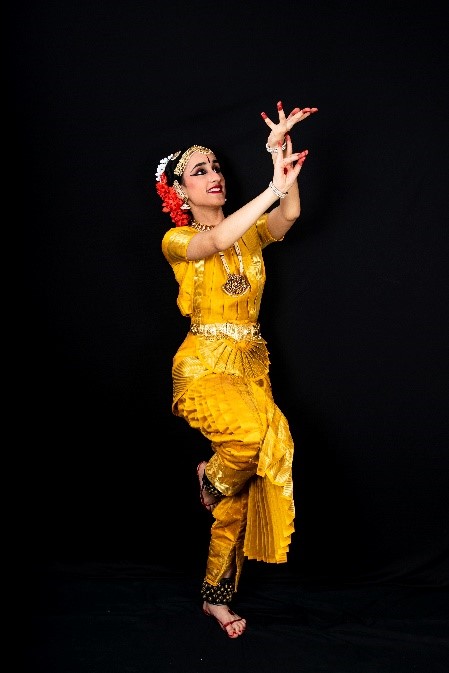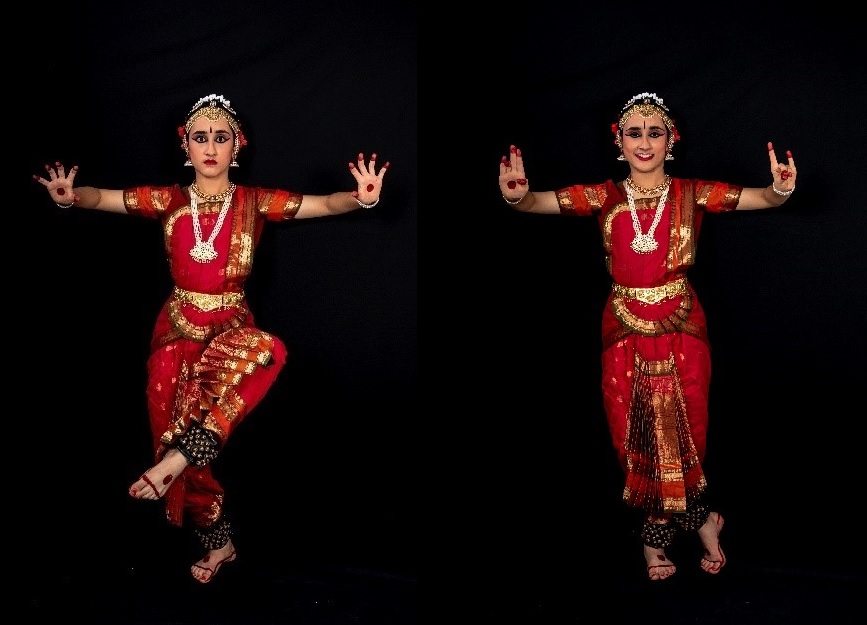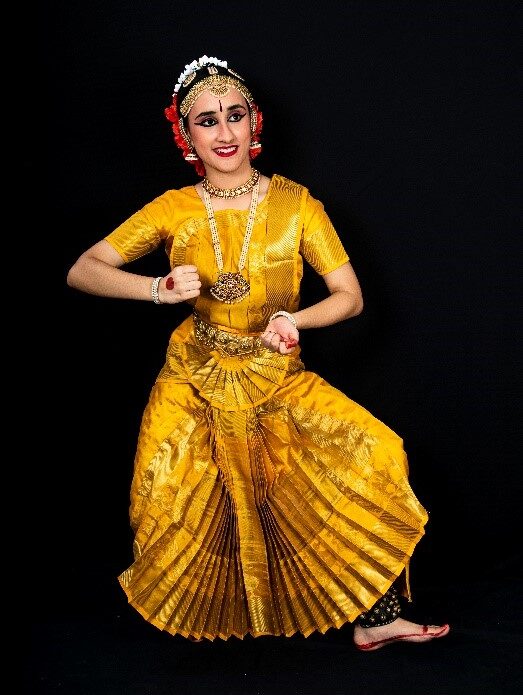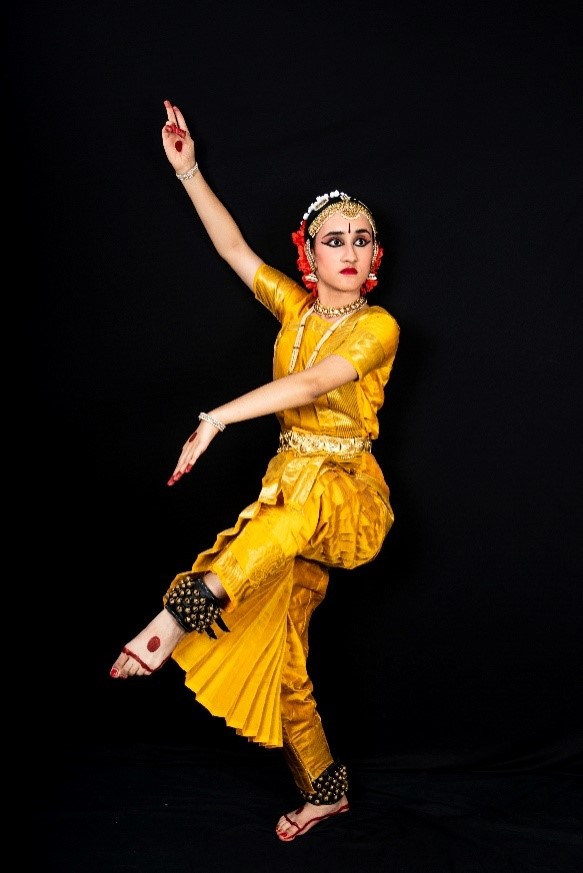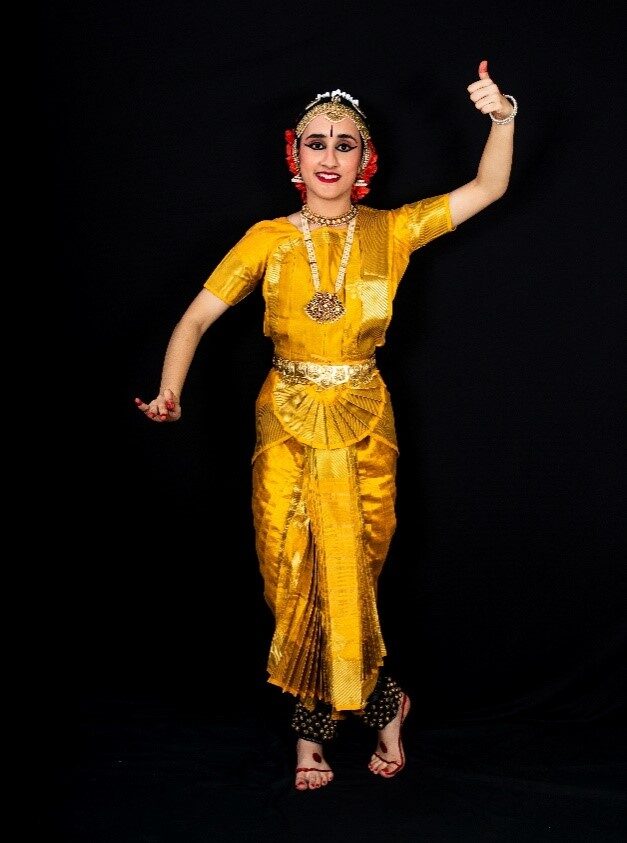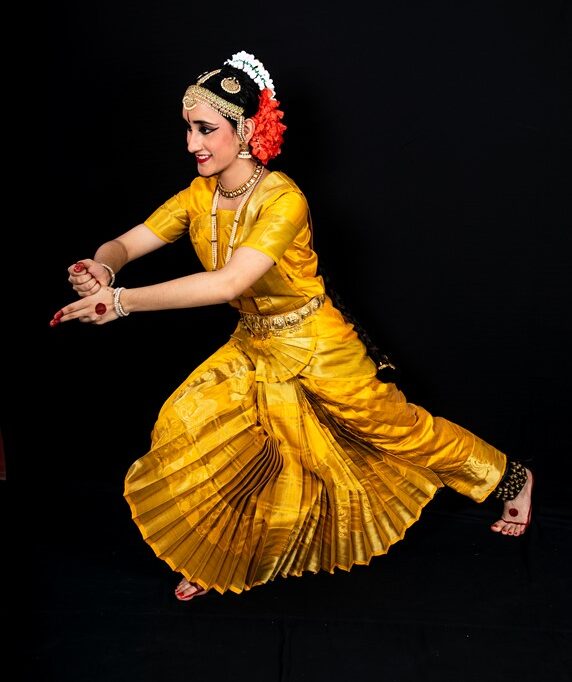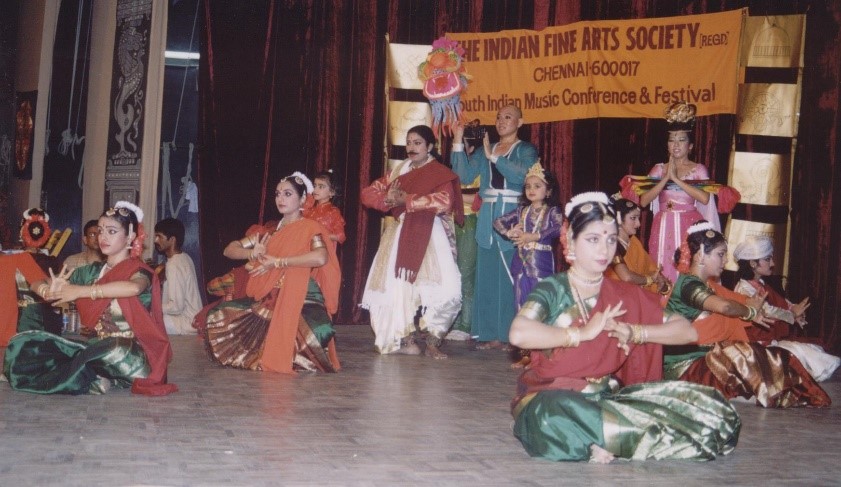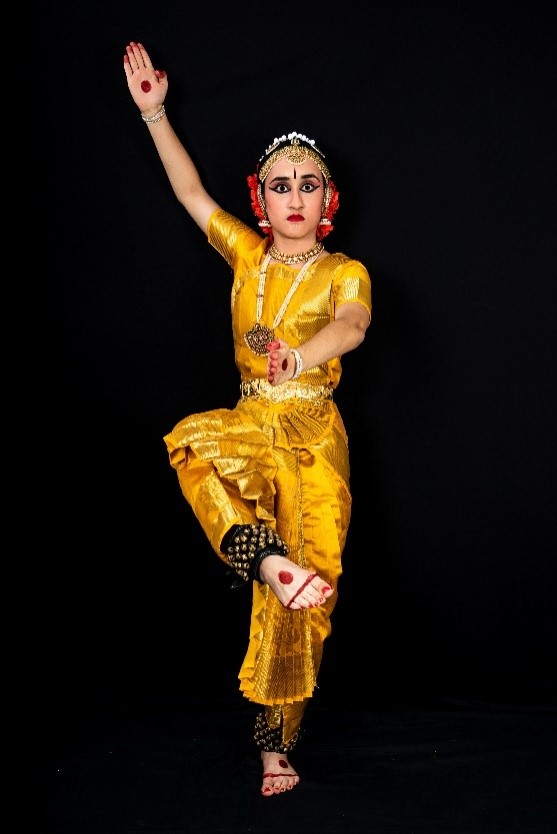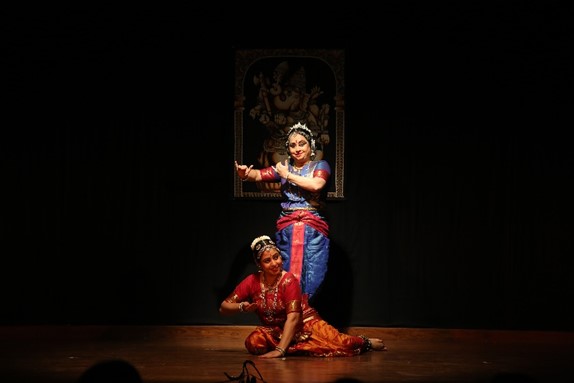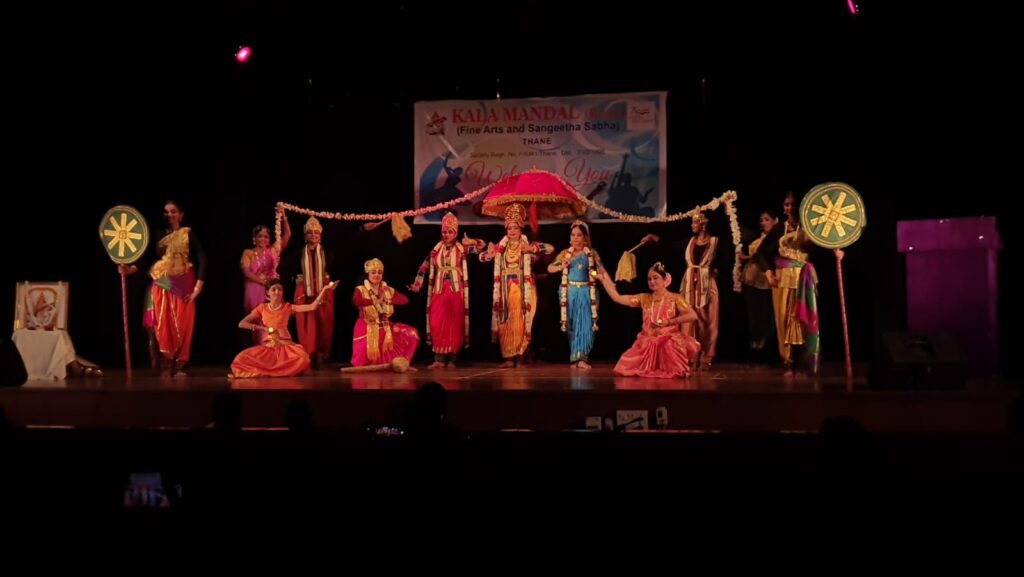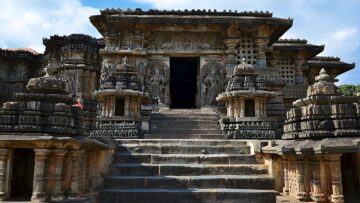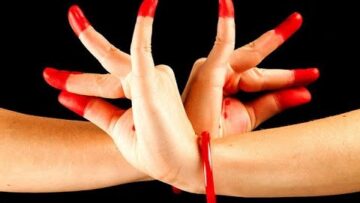Introduction
The dance of Vishnu in his various avatara or incarnations is visualized as maya or lila, as seen in both textual and oral traditions. The most commonly associated words with the idea of play or theatre (and in that context with dance) with respect to Vishnu and his incarnations are ‘Vishnu maya’ and ‘Krishnalila’. In ‘Brahma sutra’ this maya or lila is explained to be result of the joy that emanates from within, and is compared to that of a man who is happy and on awakening from sleep dances around without any motive (Kinsley,1979). Going back to the earliest text associated with dance which is the Natyashastra, the ritualistic opening of the performance space is done with purvaranga. In the purvaranga many deities are invoked to consecrate different parts of the stage and it starts with the worship of the trimurtis, Brahma Vishnu and Shiva. The sutradhara goes to the east and bows with three steps associated with the three gods. The first is worship of Shiva (Rudra) with the raised right leg indicating the male aspect of nature, and the second step with partially raised leg which indicated the neuter for Brahma and the last was for Vishnu with the raised left leg which indicated the female aspect of divinity. (The male, female and neuter elements also represent the entire universe.) These three steps are also attributed to the legend of Vishnu conquering the three worlds with three steps, and this aspect is reflected in the Natyashastra by invoking the three deities who control the entire universe, and thus bringing order into the performance space. (Lidova,1996). It is interesting to note that the idea of Vishnu representing the female aspect of divinity is seen reflected not only in the Amritamanthana mentioned in the Natyashastra but also staged symbolically in the pre performance rituals. The sutradhara who performs the purvaranga is identified as Brahma, his assistant (paariparshvaka) as Vishnu and the Vidushaka is identified with asuras. Some scholars like Lidova (1996), see the dialogue and arguments which happen between the assistant and Vidushaka as a recreation of the battle between good and evil which happens in Vishnu’s battles with the danavas. Vishnu’s words of truth now spoken by the assistant destroy the sometimes comical words of the Vidushaka and hence the battle of words is won, where truth triumphs over a chaotic world. The idea of Vishnu who represents the female element is repeated again in the Amritamanthana enactment in the Natyashastra where Vishnu transforms into the enchantress Mohini and hands victory over to the gods by deceiving the asuras out of the nectar of immortality of asura. This idea of Vishnu representing the female element of universe is repeated again in many performing art traditions like Mohini Attam where a complete dance style evolves from the legend of Amritamanthana. If Natyashastra was influenced by Shaivism, later commentators according to Raghavan (1978) were influenced by Krishna and Vishnu. Describing a dance in springtime performed by nartakis, at the end of the dance a shloka or hymn is sung saying that the dance originated from the movements of the devas when they danced with joy on getting amrita from Vishnu during the churning of the ocean. This is clearly seen in Nartananirnaya a 16th century text which is dedicated to the nartaka and his/her ensemble of musicians. This treatise is written by PandarikaVitthala who was smartha Vaishnava brahmin who was devotee of Vitthala of Pandarpura. Nartananirnaya, departs from the usual practice of crediting Shiva with the origin of dance. Vishnu is said to create dance by the mere movement of his eyebrows, which makes the danseuse Maya, dance. Lakshmipati or Vishnu is said to make Maya dance in the form of his incarnations Vamana and Narasimha. Everybody bows down to Maya and her lord Vishnu who enact the play of the whole world. Krishna is also invoked for his blessings. He is described as being immersed in sport of the rasa dance[1].
मङ्गलाचरणम्
श्रीलक्ष्मीपतिचित्तवैभवसकृभ्रूक्षेपसंज्ञाज्ञया
विश्वाकारवती महागुणवती मायानटी नृत्यति ।
तां को नर्तयतीह वामननृसिंहादिस्वरूपैरलं
तौ वन्देऽखिललोकनाटकमयौ मायां च मायापतिम्
ईशं यतिलयोपेतं वर्णभेदैरुपाश्रितम् ।
रासक्रीडामयं नत्वा वक्ष्ये नर्तननिर्णयम् ॥
maṅgalācaraṇam
śrīlakṣmīpaticittavaibhavasakṛbhrūkṣepasaṃjñājñayā
viśvākāravatī mahāguṇavatī māyānaṭī nṛtyati ।
tāṃ ko nartayatīha vāmananṛsiṃhādisvarūpairalaṃ
tau vande’khilalokanāṭakamayau māyāṃ ca māyāpatim
īśaṃ yatilayopetaṃ varṇabhedairupāśritam ।
rāsakrīḍāmayaṃ natvā vakṣye nartananirṇayam ॥
The author in this text offers his salutations to Mayapati or Vishnu who is responsible for the enactment or drama of the entire world.
Vishnu Maya
Vishnu Purana pictures Vishnu as a sporting boy [2], and as a product of his sportiveness this world was created. Vishnu is pictured lying on the primordial ocean creating at his own leisure in spontaneous gestures.
(Figure 1: Vishnu)
Vaishnava legends are for the most part about the avataras or incarnations of Vishnu[3]. Bhagavata purana says these incarnations were assumed and discarded by Vishnu just like an actor acting on stage. This is of significance in performing art traditions also, especially in the case of mysticism. Vishnu is perceived as manifesting himself through his various incarnations, so the roles he assumes are thought to be his actual qualities. Thus Vishnu is described as an actor, and his role in society is defined by his lila or sportive acts.
Vishnu, though for the most part credited with preservation of the world order through his avataras also assumes destructive characteristics. In Agni Purana, Narasimha is described in the following manner
…………..his teeth and claws are hard and strong as the bolts of heaven, and who with his dreadful and disheveled mane is wildly dancing in storm….. whose unearthly peals have heaved up the one universal ocean of the millenium, the ocean madly, mightily, dashing, rolling , dancing, with its energy of destruction over the space where the suns and constellations have been, in a weird dance of the ecstasy of death.[4]
This raudrarupa or rage has Narasimha roaming in the world causing destruction and one of the legends in the Narasimha temple in Simhachalam[5] (in Andhra Pradesh) also describes this aspect.
In the Pancharatra philosophical system the theory of evolution is explained in the following manner[6]. Narayana or Vishnu is the unchanging Purusha and he possesses Shakti which is similar to Him. They are one and they also divided and the functions of Vishnu in this world are not possible without Shakti. Shakti is made up of two vibrations, the Pure and the Impure vibration. These vibrations in the form of Bhuti or shakti are made to dance in many ways, by the ‘will’ of Shakti. This dance of Shakti’s ‘will’ leads to the pure and impure evolution. The pure evolution leads to a place which is described as the “highest heaven” where all bodies who have attained enlightenment or moksha reside. The impure evolution leads to the creation of this universe and the four varnas [7] and so on. Therefore the dance of Vishnu’s Shakti which leads to the creation of the universe and the ten incarnations or avataras are also a product of this dance.
Apart from Vishnu’s ten incarnations, his Shakti also emerges as a female called Mohini. Mohini is also known for her enchanting dance and the present day style of Mohini Attam from the state of Kerala claims its origins in this dance of Vishnu (Rele, 1995). David Kinsley, a renowned Indologist/scholar, views the manifestation of Mohini as a ‘divine comedy’ in the following myth. Shiva is approached by an asura named Vrika who asks a boon that anyone who is touched by him should be reduced to ashes. Shiva grants the boon, but unfortunately Vrika chooses to test the efficacy of boon on Siva himself. Shiva flees and Vishnu intervenes in the form of a small boy who convinces the asura to place his hand on his own body. The asura is thus burned and Vishnu saves the world again. This legend is also popular as the Bhasmasura story, with Vishnu in the form of Mohini engaging the asura in a dance competition leading to the asura’s demise.
In the Bhagavata purana Vishnu appears as Mohini at the time of amritamanthana, and enchants the asuras and gives the amrita or elixir of immortality to the gods. “It is Vishnu’s maya, the enchanting feminine prowess that did this deed, here again it is the same enchantress, who not only befoiled the asuras after the churning of the ocean for ambrosia, but also Siva himself, who madly ran after her, bewitched by her beauty. Malabar is the home of Mohini Attam, a feminine dance in Kerala……”[8].
There are other regional legends which associate Vishnu with dance in various kshetras or temples. Vishnu is praised as Mayakoothan or the one who dances and creates maya or illusion though a divine drama, while astride his Garuda vahana or eagle vehicle. This is from a Tamil verse/song by the saint Namaazhvar in his Tirumozhi dedicated to the temple, Srinivasa Perumal Thirukovil, Thirukkulandai in Tamil Nadu. Vishnu or Perumal also is said to have danced in this sacred place after killing a demon Asmacharan. The gods saw him dance on the demon and asked him to dance again at this sacred spot.
Of the various incarnations Vishnu’s eighth incarnation as Krishna is well known for his dancing prowess. In his childhood even Krishna’s crawl is described as a dance with anklets and bangles making sweet music which attracts everybody[9]. This is paralleled in the incarnation of Rama also, Tulsidas describing the beautiful child writes saying the sound of his anklets attracted the rishis[10] . Krishna depicted as a child or Balakrishna holding a butter ball in the palm of his right hand and crawling is a very popular figure seen in sculptures, paintings and there is one temple in Udupi dedicated to this depiction. The Chennai museum has an image in bronze of dancing Krishna with a butter ball in hand, which is quite unusual. This is described in the BrahmiyaChitra Karma shastra and is referred to as navaneetanritta or butter dance. The image in the museum has the right hand holding the butter ball with the left hand in the dola hasta held high. The right leg is also lifted in kuncita position.
(Figure 2: Kuncita position)
As an adolescent Krishna and his friends were constantly dancing and singing. In the Bhagavata Purana, in Vrindavana, Krishna and his brother Balarama danced and sang. They often accompanied their friends on musical instruments[11]. The carefree spirit of god’s lila is brought out with his dance and other activities.
Similarly Krishna’s combat with asuras is also seen as a lila. The incident of ‘Kaliyamardhana’ immediately comes to mind when we think of Krishna’s dance. Krishna is described as the master of all dancing, when he begins to dance on the hood of the serpent Kaliya. Again and again as the serpent lifts his head Krishna pushes it down with his dancing feet[12]. But throughout this mortal combat Krishna is always depicted smiling and it appears like it was a mere sport to him. This is an example of the dance of destruction which in Shaivaite lores takes on darker mood whereas Krishna’s dance always remains a lila or sport. The images below shows the depiction of Krishna dancing on the serpent with the hastas depicting him holding the tail of the snake and showing the hood of the snake in the other, indicating that he is dancing on the hood of the snake, in Bharata Natyam and Kathak style. The sculptural image is from the Hoysala period and represents the same lore.
(Figure 3)
The other important dance of Krishna is with the gopis in Vrindavana, the rasa dance. Krishna dances with the gopis on the banks of the river Yamuna and often depictions of this dance show Krishna multiplying himself, so that he accompanies all the gopis. This circular dance is the joyous dance of love between Krishna and the gopis. It is described in three phases in the Bhagavata Purana, the first phase has Krishna playing on the flute. The gopis are intoxicated by the music of flute and leaving their duties they rush to meet Krishna[13] and then dance with joy. In the second part, Krishna disappears and the gopis unable to bear the pangs of separation enact many episodes from his life. Krishna then reappears and the third act follows, in which they dance the rasalila.
The Tamil epic Shilappadikaram refers to the dance of Krishna in the Indradhwaja festival at Puhar. Describing the festivities several dances are mentioned and one of them is the elephant dance that Krishna performed after defeating Kamsa and the wrestler’s dance that he performed after defeating Banasura[14]. Another song in the same text in praise of Krishna says, “may the god we honour through his love dance here show mercy on us now”[15]. In another instance in order to calm Kannagi (the heroine), another lady Madari and her daughter decide to perform “the dance of love…. Which shows one of the games young Krishna and Balarama had played on the dance ground of the cowherds”[16]. The dance is then performed with the two of them play acting as Krishna and Balarama and the other girls forming a circle around them by joining their hands. This curiously resembles the rasa dance of Krishna.
An interesting fact is that the dancers take on the characters of Krishna and Gopi. This enactment is advocated by Bhagavata Purana and Harivamsha. In the Bhagavata Purana, Krishna says, “that the faithful should sing and enact my story which is beautiful and auspicious. It sancitifies people”[17]. He also says, “the stories of my birth and life may be related. Joyous celebrations should be organised. Songs , dances, musical instruments should be offered on festive occasions in my temples.[18]” “My story should be sung, danced and enacted on festive occasions[19]”. The fact that the puranas advocate the enactment and dance for the attainment of moksha emphasizes the religious aspect of dance and also the fact that it is very dear to the godhead himself. When referring to the vast sculptural legacy of traditional art, Vishnu murtis are always depicted in a static samapada posture.
(Figure 4: Samapada pose)
Maxwell explains the reason for this immobility of the central sect image -“With the concept of unruffled tranquility and effortless existence expressive of the unqualified state of Being which Indian theism posits as the primary condition of god, outside time and space. The stillness of these images represents the deity in his transcendent, original nature, prior to the work of creation, in the pure state of his own being”[20]. Thus the samapada position itself is a non-movement which has been adopted by Vishnu to indicate the immovable nature of the brahman. It is like the silent spaces in music which define the rest of the melody. It is interesting to note that in the oral tradition of dance the feet when held in a samapada pose with one foot in tryashra position which is seen in images of Rama and some images of Shiva when he standing is called the vaishnavasthana, regardless of the deity adopting the pose. Similarly, as Trivikrama in the Vamana avatara of Vishnu raises his leg in pose which in dance parlance is similar to the vishnukrantakarana[21]. This I feel is an example of a movement or pose which is used to represent certain aspects of deity transforms into an iconic pose or gesture that becomes totally representative of that deity. This pose of Trivikrama which is used to indicate the victory of Vishnu over the three worlds became so much a part of Vishnu’s image, that the karana itself is called Vishnu kranta. Of course whether there were sculptural/painting depictions before the Natyashastra or whether the later sculptural texts adopted this movement is debatable. Krishna as Venugopala is also shown invariably with the leg in a swastika pose and rarely is he shown playing the flute with any other leg position. This shows how a posture or the product of a movement itself becomes an iconographic feature.
(Figure 5: Swastika pose)
Coming back to dance literature, Vishnu appears in the Natyashastra after the first dramatic performance. Delighted with the first dramatic performance Brahma and the other devas offer gifts, and Vishnu on that occasion gifts a royal throne[22]. To prevent any obstacles in the way of a dramatic performance a jarjara or flagstaff and the thunderbolt or vajra were posted. Different parts of the jarjara were posted with different deities. Brahma occupied the top position, Shiva the second and Vishnu the third, followed by Kartikeya, Nagas, Sesha, Vasuki and Takshaka[23]. While saluting the deities, at the beginning of the performance, the stage manager, bows to Rudra, Vishnu and Brahma, by taking three steps forward towards the east. Vishnu is said to be feminine and the left foot is used in stepping forward as it said to be the feminine foot[24].
But the most important aspect of total theatre or natya that Vishnu is credited for are the vrttis. In the chapter Vrttivikalpa, the origin of the vrttis or styles of presentation are credited to Vishnu. Achyuta (Vishnu) once converted the entire universe into a vast expanse of water through his maya shakti and lay down on the serpent couch. Two asuras Madhu and Kaitabha became arrogant and challenged Vishnu. They attacked Vishnu and struck him with their fists and harsh words. Vishnu fought them and while fighting he struck the ground with his feet causing a great bhara or weight on the earth. Thus the bharativrtti or verbal style was born. From his bow saranga a lot of sound was produced giving the satvativrtti or grand style which indicated potential strength. Vishnu moved with a lot of grace and strength and thus the kaishikivrtti or the graceful style was born. The fight consisted of various vigorous movements from which the arabhativrtti was born[25]. The vrittis are said to be full of bhavas and rasa. This is significant because Vishnu is associated with introducing different styles which are full of bhavas which indicates the presence of a narrative structure.
In Natakalakshanaratna kosha by Sagaranandin, a treatise on dramaturgy written around the 11th century AD[26], while describing different types of natakas and their rasas, refers to the dramatic situations relating to the Ramayana. For the depiction of shringara rasa an incident from a drama Janaki -raghava is cited, where Rama expresses his delight on seeing the bashful and amorous movements of Sita. Bhoja’s ShringaraPrakasha[27] describes the angas of a dance called nartanaka, called chalika, lasya, halisaka and rasa are described. Raghavan (1978) says that the chalikya described in Harivamsha is the same as chalika. Chap 89 in the Harivamsha is called chalikyakrida and in this at the behest of Krishna and Balarama, the apsaras sing and dance to the music of the voice and the instruments. They dance the rasa dance, singing songs in the different local dialects and clapping their hands. Another dance described is the dandarasaka which consists of boys and girls forming patterns and dancing with colored sticks. Raghavan says that the halissaka is a dance where Krishna stands in the centre and the gopis dance around him, thus there is one nayaka and many nayikas. In the case of rasa or dandarasaka there are pairs which show Krishna multiplying himself.
In the performing traditions there are three major types of Vaishnava performing traditions. One is the theatre of the Bhagavatas, classical dance traditions and folk traditions. As early as Bhasa, c.400 B.C. there are dramas based on the life of Krishna. Bhasa wrote two plays the Balacharitram and Dutavakyam[28]. There are well known instances of the Jayadeva’s Geeta Govinda composed in the twelfth century AD, being performed in the Jagannatha temple. An inscription dated c. 1499 AD belonging to Gajapati ruler Prataparudradeva says that dance would be performed as bhoga to lord Jagannatha, and the no other song except the Geeta Govinda would be sung[29]. Another example in the present day state of Kerala in India, is the art form of Krishna Attam, a dance drama tradition performed. It is commonly believed that the performance of a play in Krishna Attam called swayamvaram is said to give the devotee who sponsors the performance a good husband and when an Avataram is performed it bestows a child. Thus the performance of the dance drama is not merely an artistic venture but god himself reacts to the performance and rewards the devotee. The Bhagavata Mela Natakam of Mellatur in the state of Tamil Nadu is performed every year on the Narasimha jayanti in the temple. After donning the mask, the actor who performs is worshipped as the deity Narasimha. This kind of role playing is special to Vaishnava dance traditions. Even in the north when the folk tradition of Ramlila is performed the young performers chosen as Rama, Lakshmana and Sita are worshipped at the end of the performance as if they were in fact the deities they were representing. Mention should be made here of another temple belief from the state of Tamil Nadu describing an incident when Hanuman or Anjaneya danced when he was released from a curse by Lord Shiva. Hanuman disturbed Kartiviryarjuna who was praying to Lord Shiva. Kartiviryarjuna cursed Hanuman, who in turn worships Shiva to be released from this curse. Shiva appears with Uma and releases Hanuman from the curse. Anjaneya is said to have danced in joy and this was called Anuman Anandakudi.
Similarly, the dashavatara tale is also enacted. In the older folk traditions of theatre of Maharashtra, in the nandi or the invocation of a play, a dance drama describing the avataras of Vishnu is enacted. There is a tradition of dance drama called dashavatari which is also performed in Maharashtra. The above two dance drama traditions belong to folk traditions, whereas the Kuchipudi dance drama tradition belongs to the classical dance drama tradition. The Kuchipudi tradition also presents several Vaishnavaite themes including the dashavatara. However Bhamakalaapam, a dance drama involving Krishna and his consort Satyabhama, is still the most important and revered of all the dance dramas in this tradition. Satyabhama is portrayed as an extremely proud heroine who realizes eventually that the supreme godhead (Krishna), accepts only the humble devotee. So, Satyabhama plays out the role of a devotee in the process of understanding and attaining moksha.
In the state of Gujarat and Rajasthan folk traditions of dance involve the playing of rasa dance of Krishna. The dance is done in a circular formation with sticks in the hand. Karnataka also has a similar dance with sticks in praise of Krishna.
The bhakti movement also led to introduction of mystical devotion, which forms a major portion of the classical dance repertoire. The love of Radha for Krishna is portrayed through the ashtapadis of Jayadeva. The dancer takes on the role of a heroine pining for her lord and usually the lord is either Krishna or in some cases Vishnu. None of the other incarnations of Vishnu were considered suitable for this type of portrayal. Thus, Vaishnava dance traditions for the most part have adopted the technique of role play and have given importance to narration of tales. Krishna is capable of inspiring such passion because of his relatable nature, and his differing aspects; as a son, a teacher, a friend, a lover, a confidant, and a god. The gopis become the true symbol of what it means to be a devotee of Krishna, for even in the strict social confines of Hindu society they ignore these social boundaries in order to bring themselves closer to the pure state of being that is Krishna (Kinsley 1979). Ever enigmatic, Krishna through the process of discovering him, allows one to uncover one’s own true self. Thus, being the perfect subject inspiring artists for generations.
Vishnu, Krishna and several characters from the Ramayana and Mahabharata have been enacted and danced for centuries in India. They continue to be hugely popular as the lores of Vishnu and his avataras provide a wonderful emotive range for the artist to create and perform.
The most popular Dashavatara lyrics are in Sanskrit penned by the 12th century saint poet Jayadeva.
- Matsya (Fish)
Pralayapayodhijaledhrutavaanasivedam
vihitavahitracharitramakhedam
keshavadhrutameenaShareera
jayajagadeesha hare
(When there was a great deluge,
You rescued the vedas like a boat on a straight path
You appeared in a fish (matsya) form
Oh Sri Keshava, victory to the lord of the world, Hari)
(Figure 6: Matsya pose)
- Kurma (Turtle/Tortoise)
kshitirativipulatareytavatishtatiprushthe
dharanidharanakina chakra garishte
keshavadhrutakachchaparoopajayajagadeesha hare
((When the ocean was churned) on your back
You carried the weight of the earth (Mandara mountain) on your hard back (causing scars),
taking the form of a tortoise or kacchapa
Oh Sri Keshava, victory to the lord of the world, Hari)
(Figure 7: Kurma pose)
- Varaha (Wild Boar)
vasatidashanashikhareydharanitavalagna
Shashini kalankakalevanimagna
keshavadhrutasookararoopajayajagadeesha hare
(Resting on the tips of your tusks, the earth clings
like the scars on the crescent moon, Oh Keshava you take the form of a wild boar or sookara
Oh Sri Keshava, victory to the lord of the world, Hari)
(Figure 8: Varaha pose)
- Narasimha (Man-Lion)
Tava kara kamalavarenakhamadbhutashrungam
dalitahiranyakashiputanubhrungam
keshavadhrutanarahariroopajayajagadeesha hare|
(Your lotus like hands have astonishingly fierce claws, you killed the asura Hiranyakashipu,
Oh Keshava took the form of a Man (Hari)- lion
Oh Sri Keshava, victory to the lord of the world, Hari)
(Figure 9: Narasimha pose)
- Vamana (Pygmy or midget)
chalayasivikramanebalimadbhutavamana
pada nakhaneerajanitajanapavana
keshavadhrutavamanaroopajayajagadeesha hare
(Through your clever tactics you asked for three footsteps of space from the king Bali (thus covering the entire three worlds),
The pure waters (possibly) of Ganga flowed out of your upraised foot nails,
You took the form of Vamana, Oh Sri Keshava, victory to the lord of the world, Hari)
(Figure 10: Vamana pose)
- Parashurama (Axe wielding Rama)
kshatriya rudhiramayejagadapagatapaapam
snapayasipayasishamita bhava tapam
keshavadhrutabhrugupatiroopajayajagadeesha hare
(Kshatriyas created havoc and committed lot of sins in this world,
You killed them and created pools of blood to save the world,
in the form of Bhrugu or Parashurama)
(Figure 11: Parashurama pose)
- Rama
vitarasidikshuraneydikpatikamaneeyam
dashamukhamoulibalimramaneeyam
keshaavadhrutaramashareerajayajagadeesha hare
(Casting (Ravana’s head) in different directions, hurling into the sky
Oh Keshava you took the form or shareera of Rama
Oh Sri Keshava, victory to the lord of the world, Hari)
(Figure 12: Rama pose)
- Balarama
vahasivapushivishadevasanamjaladabham
halahatibheetimilitayamunabham
keshavadhrutahaladhararoopajayajagadeesha hare
(Wearing robes on your strong bright body,
The waters Of the Yamuna river were frightened by your plough (which threatened to attack or strike it),
Oh Keshava you took the form of Haladhara or one who wields the plough)
(Figure 13: Balarama pose)
- Buddha
nindasi yajna vidherahahashruti jatam
sadayahrudayadarshitapashughatam
keshavadhruta buddha shareerajayajagadeeshahare
(Ridiculing the vedic ways
Feeling compassion always for animals which were sacrificed
Oh Keshava you took the Buddha form
Oh Sri Keshava, victory to the lord of the world, Hari)
Below is an image from a performance of Buddhavatara dance drama in Chennai where the final scene has the performers holding the Dharmachakra pravatana mudra.
(Figure 14: Buddha pose)
- Kalki
mlechchanivahanidhanekalayasikaravalam
dhoomaketumivakimapikaralam
keshavadhrutakalkishareerajayajagadeesha hare
(Barbarians were cut down by your sword
Which you carried like an avenging meteor
Oh Keshava you took the Kalki form)
(Figure 15: Kalki pose)
Sri jayadevakaveridamuditamudaaram
ShrunuShubhadamsukhadambhavasaaram
keshavadhrutadashavidharoopajayajagadeesha hare
(Listen to Jayadeva’s poetry it gives joy and happiness
Oh Keshava you took ten incarnations
Victory to the lord of the world, Hari)
Here Jayadeva envisions Krishna or Hari as the universal lord or Jagannatha, and hence Balarama becomes an avatara. Below is a representation of Krishna in dance with Krishna shown playing the flute and the child form of Krishna with the butter ball in hand.
(Figure 16: A still from enactment of Jayadeva’s poetry)
If Vishnu is the supreme lord then Krishna is envisioned as one of the avataras and sometimes Balarama or Buddha are considered as the ninth avatara.
The Dashavatara is often compared to the Darwinian model of evolution, with the Matsya or fish compared to aquatic animals which first appeared on earth, with Kurma representing amphibians, Varaha representing terrestrial creatures and this can be extrapolated to the other avatars.
Among the navasandhikautvam’s performed in Bharata Natyam, the Trimurti kautvam’s have Shiva, Vishnu and BramhaKautvam, these pieces are performed in Bharata Natyam as smaller pieces in a recital or mainly relegated to junior students or debut recitals. A famous shabdam ‘Sarasijakshulu’ is dedicated to Lord Krishna. Many varnams which are the central piece of a Bharata Natyam arangetram have Vishnu or Krishna as the main deity to which the dance piece is dedicated. Some well-known examples are Sakhiye Inda Jaalam in Raga Shankarabharanam and Adi Tala by the great nattuvanarDandayudapani Pillai and Nee Inda Mayam in Raga Dhanyasi and Adi Tala by Papanasam Sivan dedicated to Krishna. Many songs with the theme of shringara bhakti are always addressed to Krishna or in some cases to Vishnu. But almost no song is addressed to Rama as he is regarded as ekapatnivrata purusha and hence unapproachable.
There are several kirtanas, kritis, padams and javalis dedicated to Vishnu, Krishna and Rama. In the last three decades Meera Bhajans, Tulsidas dohas, Annamacharya’s sankirtanas and those of Vaishnavite other saint poets have been adapted for the dance.
(Figure 17: Pattabhishekam or Sri Rama’s coronation)
The image above is the pattabhishekam or Sri Rama’s coronation in the enactment of Tulsidas Ramayan by Kanaka Sabha Performing Arts Centre (Mumbai), 2023
From the above research types of performance traditions used for dance can be classified into the following categories:
1. Nayika kirtana– Nayika or heroine-based compositions are most popular with dancers even today and are considered more artistically challenging. These compositions also allow for greater freedom in creativity as the nayika or heroine need not adhere to any particular character plan, which legendary characters are bounded by. The nayika as lovelorn heroine and the nayaka being Vishnu, or Krishna has formed the mainstay for many compositions. It is said to have philosophical roots in madhura bhakti traditions which grew in the medieval period. Raganuga bhakti sadhana or devotion to god which was like the love of a heroine to her lord became very popular among the saint poets and music composers all over India. Here the human soul is compared to a heroine or nayika and the brahman or god is equated with the hero. The soul yearns to merge with the ultimate truth or brahman and this forms the crux of the compositions. The nayika or soul also has friend or sakhi who is compared to the guru or teacher who leads and cajoles the soul and the nayaka or god /brahman to meet with each other. Often lyrics have the sakhi or friend describe the distress of the lovelorn heroine.
The legendary violinist and composer Sr Lalgudi Jayaraman’s varnam in Raga Charukesi and Adi tala is a favourite in the Bharata Natyam dance repertoire. The lyrics depict a lovelorn heroine who describes her state when she is separated from Krishna. She is a virahotkhantita nayika or one whose sorrow on separation from her beloved has reached great heights. Below I have given the lyrics in the structure of the varnam- Pallavi, Anupallavi, Chittaswara and Charanam. This forms the musical structure of all pada varnams in the Bharata Natyam format. The second half of the varnam is sung in double the speed of the first half or is at least sing faster than the first half. In between each lyrical passage there are jatis or rhythmic passages, which offer a relief from the intense emotional outpouring in the narrative stanzas. The passages are sung repetitively to offer improvisational scope for the dancer and this makes the varnam a very challenging composition to dance and observe. The meanings given below are not the word to word meaning but convey the overall gist of the verse.
Charukesi Varnam
Pallavi innamenmanamariyadavarpolairundidalnyayamayadavamadhava
Oh Yadava Madhava (or Krishna) have you not understood my mind or heart after all this time are pretending not to understand.
Anupallavi munnampayinradoinnatakam-ellam mannakamalak-kannamaniivanna Oh my king, lotus eyed one, have you practiced this pretence or drama of indifference in the past?
Chittasvara sahitya parivilaadanenjamtandadaarpagaliravellamninaindurugiyum
palavidamtanileninaiyazhaittenmanamcalittenorutunaiyiln
My innocent heart I gave to you, day and night I thought of you and my heart dissolved in different ways I called out for you, my mind grew weary and lonely without any support.
Charanam or yettugadai (refrain) kuzhaludumazhagakannakuraitirAyo
Oh Kanna or Krishna playing the flute, will you not end my unhappiness?
Charanasvara sahitya ullumpuramengumisaipongatirAyo
Inside and outside will make music flow and stop my sorrow
The saint poet Annamacharya from Andhra Pradesh has written several compositions with the Goddess Padmavati or Alamelumanga or the consort of Tirupati Balaji or Venketeshwara. In the very popular composition Emokochiguruta in Raga Tillang and Rupaka tala he writes of Padmavati who is a sviya nayika or the lawfully wedded wife of Balaji or Vishnu, who is observed by her sakhis or friends, and teased for spending the night with her husband Lord Vishnu. The words in Telugu
Emokochigurutadharamunayedanedakasturinindenu
bhaminivibhunakurasinapatrikakadukada
Her (Padmavati’s) are smeared with musk marks, and is it not a letter written by the beautiful lady to her Lord
2. Namasankirtana – Songs of praise have lyrics by saint poets or other music composers have lyrics which praise Vishnu or any other deity. The dancer enacts the meaning of the lyrics and expands on one or two phrases. For example:
Saint Tyagaraja’s Kshirasagara Shayana in Raga Devagandhari and Adi Tala in Telugu is in praise of Vishnu or Rama. The charana has the lines
Varanarajunibrovamuvegame
The elephant king (Gajendra) you protected quickly.
The dancer elaborates the story of the elephant king. The elephant/Gajendra is attacked by a crocodile while he is bathing in the river. The elephant who is a devotee of Vishnu cries out to be rescued, and Vishnu appears immediately on his vehicle the eagle/Garuda and saves the elephant by killing the crocodile. This tale is elaborated through hand gestures, body movements and most importantly facial expressions. Bhakti or devotional fervor suffuses the entire presentation.
Harikatha, Villupattu and kirtana traditions have developed over centuries in different parts of India. Among these traditions in harikatha traditions there is spontaneous dancing by the storyteller which also has its own hasta or mudra traditions. It is important to note that the Kathak dance style claims its origin with the kathakar tradition which is similar to the other oral traditions of storytelling. Many attribute the origin of Kathak to the storytelling practices of Ramayana and Mahabharata in ancient times.
3. Patrakirtana– In this dance piece the saint composer has written an autobiographical composition. Here the dancer becomes the saint poet or any other mythical or historical character. For example: the saint poetesses Andal’s and Meerabai’s compositions are very popularly used in dance. The dancer presents the dance piece as if she herself is the saint poetess. This is patrakirtana or the dance presented as a patra or actor, who has taken on the role of the character. This is a very important part of Vaishnava religious traditions where the devotee (male/female) picture themselves as Radha or a devotee of Krishna who has fallen in love with the deity. Compositions of Sri Tyagaraja , saint poet Annamacharya and Ramdas and other Vaishnava saints also fall under this category.
Yakshagana in Karnataka, Bhagavata mela in Tamil Nadu, Kuchipudi in Andhra Pradesh, Krishnattam and Kathakali in Kerala are the more well-known dance drama traditions spread all across South India. Of these Bhagavata Mela is from the Vaishnava sampradaya and is performed in the Sri Varadaraja Perumal Temple, Mellatur, Tamil Nadu. On Narasimha Jayanthi (April/May), these brahmin bhagavatars perform the dance drama Prahalada Charitram as worship to the presiding deity, Narasimha (fourth incarnation of Lord Vishnu). A special feature is a 300-year-old Narasimha mask which is worshipped and is worn by the actor/dancer playing the role of Narasimha for the festive occasion. The tradition has a son from families belonging to Saliyamangalam, Terumalnallur and Mellatur being trained in the Bhagavata Mela Nataka tradition. The Nayak Maratha Kings of Thanjavur who ruled during early 16th century to late 19th century are credited with the growth of music, dance and other arts in the temple traditions, especially the Bhagavata mela tradition. Raghunatha Nayak who ruled from 1600 to 1634 AD, and his son Vijayaraghava Nayak are credited with several plays written in their courts. Vijayaraghava Nayak wrote several dance dramas in the Telugu language dedicated to Vishnu. So, the sect of the bhagavatas or those who worshipped Vishnu with music and dance grew under royal patronage and has been handed down from generation to generation through oral traditions. (Raman, 2018).
It is interesting to note that all the dance drama traditions associated with ritual spaces or temples have male characters enacting the female roles. It could be because women have historically restricted entries into temple performance and ritual spaces or it could also be that the donning of female roles was not unusual in Indian mythology and god Vishnu himself takes on the role of Mohini to protect the gods.
The Kuchipudi tradition also favours a large repertoire of compositions in praise of Lord Krishna and the Tarangini by Swami Yati Narayana Teertha has been popularly performed for over a century as part of the performance tradition. The role of Satyabhama in the Kuchipudi tradition has been coveted by all practitioners of this dance form. According to one Kuchipudi scholar Narayana Teertha wanted to propagate his idea of Advaita philosophy through the character of Satyabhama.
4. Sevakirtana- In this the devotee dances and performs dance as ritual in temples or ritual spaces as a puja to Lord Vishnu. For e.g., Araiyar seva which is Natyam or total theatre performed every year on the Tamil month of Tai (January – February) a devaganam festival is held in Sri Perumal temple of Sri Sadagopa Tirunarayanaswami Divya Prabandha Pathashala in Jalladampet. Classical music and dance called araiyar seva are an intrinsic part of this festival. It is performed by assigned araiyars or priests. This form of dance seva is attributed to Nathamuni who is said to have performed the songs of saints or alwars as an offering to Lord Vishnu and this became popular form of worship. This form of worship is performed under strict conditions, with the araiyars fasting and cleansing themselves before a performance. Though the songs are part of the classical traditions unlike classical performance there is more fluidity in the presentation. The priest mimes, sings and dances in an improvisational flow to worship Lord Vishnu. The costume of the araiyar is special to this performance and practitioners like Devaganapa -Perumal Araiyar Sriram Bharathi have written and promoted this art in recent years to continue this tradition.
5. Samuhakirtana– There are many folk traditions all over India where communities dance together as part of the Vaishnava traditions. One very well-known example is the dandiya raas tradition of Gujarat where the rasa dance of Krishna with the gopis of Vrindavana is imagined and danced by common people in celebrations. Another tradition is the dindi or warkari tradition in Maharashtra where large contingents of devotees take a procession on the streets to visit a pilgrimage centre like Pandharpur which is the home of Lord Vithoba. The classical Manipuri dance style again recreates this rasa dance and it is a well know fact that the dance was learnt by all families from royalty to common people in the Manipuri traditions.
There are many more examples of Vaishnava traditions in dance all over India and these discussions on Vaishnavite expressions in art, thought and literature lead one to speculate on development of the movement dynamics of classical styles such as Kuchipudi, Mohini Attam, Odissi and Manipuri which were heavily influenced by the Vaishnavite religious movements. Further explorations of kinetics of these styles will lead to more conclusive evidence on the influence of Vaishnavite thoughts on movements. Dr. Kanak Rele has explored such kinaesthetics in the style of Mohini Attam.
If Vishnu’s dance is to be described the classical dance style of Mohini Attam or the dance of the enchantress embodies both, the maya or lila of Vishnu and the graceful kaishikivritti associated with him. Mohini Attam is described as being lyrical and enchanting dance form and is danced only by female performers. Dr. Rele while analysing the kinetic norms of this style, sees the movement reflecting the sopanam style of singing in Kerala. The jatha and latha or the tying and untying which is also described as andolika is reflected in the swaying movements of the dance style. The amritamanthana or the churning for the nectar of immortality is the legend in which Vishnu transforms into Mohini. When the gods or devas and asuras or demons churn the milky ocean several precious objects, divine animals and deities emerge, and finally the dhanvantari emerges with the nectar of immortality. The asuras or demons snatch the nectar of immortality and the gods or devas are unable to take it back. They seek help from Vishnu who decides to transform into the enchantress Mohini. This divine beauty enchants the asuras with her swaying movements and takes away the pot of nectar from them, and distributes the nectar among the gods. This Mohini beguiles, enchants and helps the good win over evil. This dance of Vishnu when he transformed into Mohini the enchantress is the inspiration for the dance style and continues to inform all the present-day practitioners of Mohini Attam. In Dr. Rele’s research work she has traced the movement of the basic movements in the dance style and associated it with the spiral rise of the chakras in yogic and vaishnavite philosophies. A similar exploration will yield new meaning to the kinetic movements of other styles. The circular rasa dance of Gujarat and the aduvulu of a classical dance of Kuchipudi which was performed by bhagavatas or acharyas will also yield similar multilayered meaning to abstract movements. Thus dance of Vishnu continues to educate, inform and enchant his true seekers into deeper understanding of the universe around us.
References
Chattopadhyaya, Siddheshwar. Natakalakshana-ratna-koshain the perspective of ancient Indian drama and dramaturgy. Calcutta : PunthiPustak, 1974.
Daniélou, Alain. Shilapadikaram(The ankle bracelet) by IlangoAdigal. New York: New Directions Pub. Corp., 1965.
Ghosh,Manmohan. The Natyashastra. Calcutta:The Royal Asiatic Society,1950.
Kinsley, David R. The Sword and the Flute: Kali and Krsna, Dark visions of the Terrible and Sublime in Hindu Mythology. Berkeley and Los Angeles: University of California Press, 1975.
Kinsley, David R. The Divine Player (A study of Krishna Līlā). Delhi: Motilal Banarsidass, 1979.
Lidova, N. (1996). Drama and ritual of early Hinduism. Delhi: Motilal Banarsidass Publishers.
Matsubara, Mitsunori. Pancaratra Samhitas and Early Vaishnava Theology. Delhi:Motilal Banarsidass,1994.
Maxwell, T. S. The gods of Asia : image, text and meaning. Delhi: Oxford University Press,1997.
Ramesan, N. Temple and legends of Andhra Pradesh. Bombay: Bharatiya Vidya Bhavan,1988.
Raghavan,V. Bhoja’sShringaraPrakasha. Chennai : Raghavan, 1968.
Rele, Kanak. Mohini Attam: the lyrical dance. Bombay: Nalanda Pubns., 1992
Sathyanarayana, R. Nartananirnaya of Sri PandarikaVitthala. (Indira Gandhi National Centre for the Arts) . New Delhi : Motilal Banarsidass,1996.
Sastri, K. (1916). South-Indian images of gods and goddesses, by H. Krishna Sastri, .. Madras: Government Press.
Shastri, Manmatha Nath Dutt. Agni Purana(Trans. 2 vols). Varanasi: Chowkhamba Sanskrit Studies Office, 1967.
Sivaramamurti, C. Nataraja:in art, thought, and literature. New Delhi : National Museum Publications Division [Ministry of Information and Broadcasting, Govt. of India], 1974.
Sri G. Gnanananda. Sri BRAHMEEYA CHITRA KARMA SHASTRAM, Voll Sanskrit original edited with Kannada gist & explanatory notes. Bengaluru: SANSKRITI SAHITYA PRASARA SAMITHI, 1999
Tulasidas, Sant . Shri Ramcharitmanas. Gorakhpur: Gita Press, 1972, Uttar Pradesh, India
Varadpande, Manohar Laxman. Religion and theatre. New Delhi : Abhinav Publications, 1983.
Wilson, H.H. The VishnuPurana : a system of Hindu mythology and tradition(Trans.). Calcutta, India : PunthiPustak, 1961.
Woolner, A.C. & Lakshman, Sarup.Thirteen plays of Bhasa. Delhi : Motilal Banarsidass, 1985
Dwivedi, Amitabhvikram. (2018). Gīta Govinda. 10.1007/978-94-024-1036-5_556-1.
[1]Nartananirnaya (Vol I), Chap I, sl 1-2)
[2] The Vishnu Purana , trans H.H. Wilson ( Calcutta, 1961)
[3] In the Bhagavata purana even his incarnations are treated as lilas of Mahavishnu. (Chap IX. 24.56 (III, 262)).
[4]Agni Purana Chap 3, 63.
[5]Ramesan (1988)
[6] Matsubara (1994)
[7] Traditionally the four varnas are as follows: kshatriyas, brahmanas, vaishyas and shudras.
[8]Sivaramamurti ( 19 74 )
[9] Bhagavata purana Chap X.8. 21-22 (IV, 35)
[10]Nupur dhuni suni muni mana moha (Balakanda, verse 198, Tulsidas Ramayan)
[11]Bhagavata purana Chap X, 18.9 (IV, 84)
[12] Ibid, ChapX. 16, 26-30 (IV, 75-76)
[13]Bhagavatapurana Chap X. 29. 3-9 (IV, 119-20)
[14]Shilappadikaram (Canto Six) trans. Danielou ( 1965)
[15]Danielou(1965) pg 120
[16]Daneilou (1965) pg 113
[17]BhagavataPurana Chap 11.11.23
[18] Ibid Chap11.11.36
[19] Ibid. Chap 11. 27.35
[20] Maxwell(1997), pg 86.
[21]Natyashastra , Chap IV, sl 161.
[22]Natyashastra , Chap I, sl 60 -62
[23]Natyashastra , Chap I, sl 89-93
[24]Natyashastra , Chap V, sl 98-101
[25]Natyashastra , Chap XXII, sl 2-18
[26]Chhattopadhyaya (1974)
[27] Raghavan (1978)
[28]Woolner and Sarup (1930)
[29]Varadapande (1983)
Feature Image Credit: Dr. Siri Rama
Watch video presentation of the above paper here:
Disclaimer: The opinions expressed in this article belong to the author. Indic Today is neither responsible nor liable for the accuracy, completeness, suitability, or validity of any information in the article.

